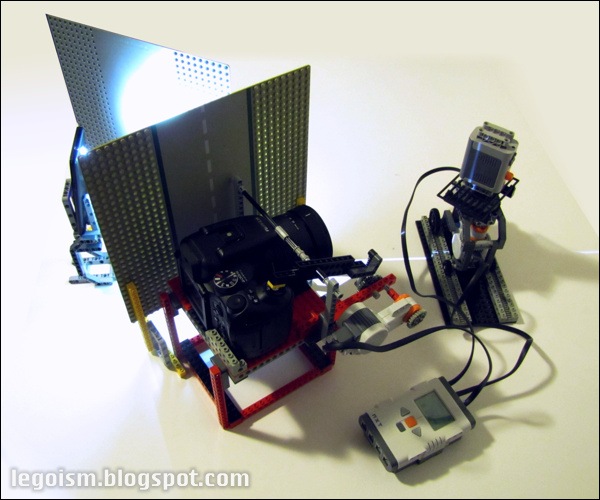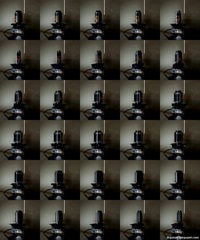
Beam & spin 3D scanners are not particularly new: there is plenty of such projects both beyond and within the Legosphere, among which the one built by Philippe "Philo" Hurbain is an excellent example if you are considering developing one. Regardless of their wide variations, they follow the same operating principle ― they aim a planar laser at the scanned object, and record (or photograph) the resulting contours as the object is rotated. With a bit of picture processing, math and geometry, a digital 3D model can be assembled. Accuracy depends on laser sharpness, camera perspective, precision of the rotating mechanism and a couple of other factors, but can yield suprisingly high resolution.
Two obvious problems of these scanners are their inability to scan the object's surface colours, and the reliance on a rather rare component: a planar laser is not something likely to wait readily in your old toy box. There are ways to improvise with usual laser pointers, though it complicates matters again.
 I've tried to work around these problems by using a different type of planar illumination ― white (to allow colour scanning) and using more common hardware. After a few tries, I've settled with a flash white LED from a mobile phone, mounted behind two barriers with a narrow slot between them. This sort of LED works well since it's white, very bright and a particularly small light source ― thus reducing the undesired penumbra on the target object. The rest is just a bit of NXT at its simplest: a motorized turntable that can also slide horizontally (to scan various surfaces from several directions if needed), and a camera cradle with a triggering mechanism.
I've tried to work around these problems by using a different type of planar illumination ― white (to allow colour scanning) and using more common hardware. After a few tries, I've settled with a flash white LED from a mobile phone, mounted behind two barriers with a narrow slot between them. This sort of LED works well since it's white, very bright and a particularly small light source ― thus reducing the undesired penumbra on the target object. The rest is just a bit of NXT at its simplest: a motorized turntable that can also slide horizontally (to scan various surfaces from several directions if needed), and a camera cradle with a triggering mechanism.
The results, as you can see on a photo of a demo sequence, are acceptable, though I have yet to write a script that will analyse the photo sequence and build a digital 3D model (probably defined by colour voxels). One can notice from the sequence photos that, while some dimensional precision is lost in comparison to laser-based scanners, the projections are clear and bright enough to be easily recognized, and colour information extracted from them. One possible problem is scanning black or at least partially black object, where there may be insufficient light to track the object shape accurately. Of course, multi-scanning with several camera positions and orientations of the target object could improve dimensional precision and perhaps colour definition too, although at a large time cost.
However, I won't go that far yet since this was intended just as a little side-experiment, initiated by a task at my day job where I needed to get exact 3D measurements of some computer components.

This comment has been removed by a blog administrator.
ReplyDeleteThere are so many advantages of a lidar. One of the best advantages of lidar is, it can collect data quickly by maintaining very high accuracy. A lidar is very effective for land surveying. Lidar Calgary, Alberta
ReplyDelete